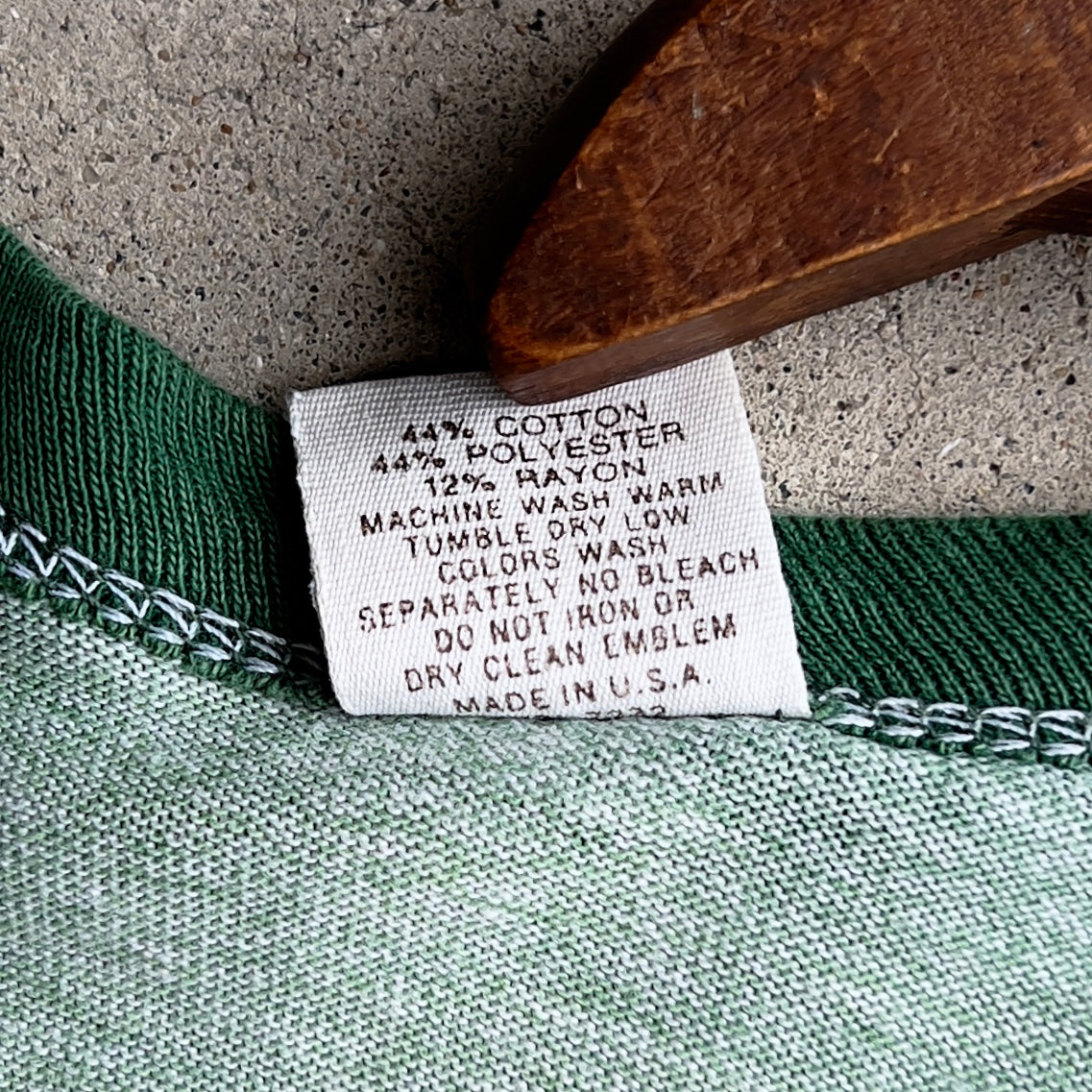
How to Care
A complete vintage care guide from washing and drying techniques, aftercare process, and more tips to ensure longevity.
Washing Methods
1. Hand Wash
Using cold water only, place your desired garment in a large bowl or sink. Allow the garment to soak up the water before adding detergents.
Once soaked, add a small amount of detergent to the bowl or sink and begin to use your hands to wash the garment. Try not to be too rough while washing, this can result in fading, accidental tears or rips, and even unwanted stretching.
Continue to hand wash your garment for about 5-10 minutes. After you are done, drain any excess dirty water. Rinse your garment thoroughly to make sure all detergents and soaps are removed.
Allow your garment to dry by squeezing out all excess water, or simply remove the garment and place it in a safe space to hang dry.
2. Machine Wash
Machine washing vintage garments is not risky, but can be if not done properly.
Place your desired garment into the washing machine, make sure it will not be snagged on anything else in your laundry. Use detergents that will not damage your garments.
Bleach or high-concentrated bleach detergents can cause fading. Bleaching can be effective in removing tough stains, but should never be used in a load with colored or black clothing. White vinegar is a great all natural fabric softener.
Place your machines water temperature setting on cold or 'eco'.
Choose a wash setting such as 'Normal Wash' or 'Delicate Wash' to ensure no unnecessary damage to your garment in the washing process. You may add whitening detergents or stain removers if desired.
Drying Methods
1. Hang Dry
Once you have washed your garment, this process is the easiest.
Remove your garment from the washing machine or after hand-washing.
Place your garment on a clothing hanger or use clothes pins to attach to a line outside. Be sure to use clothing hangers that are not too thin, in which it may stretch the collar and shoulder areas of your garment.
After you have hung up your garment to dry, now you wait. This process may take anywhere from 10 minutes to an hour depending on the material of the garment.
Avoid drying in direct sunlight, this can cause unwanted sun-bleaching and fading to darker colors and blacks.
2. Machine Dry
After washing, place your garment into the dryer on low heat settings only. High heat settings may lead to unwanted shrinking or damage to your garment.
Keep in mind the time you will be drying your garment in the dryer, where repeated over-tumbling can lead to the thinning and weakening of fibers. An ideal drying time can be anywhere between 15 minutes to 45 minutes, depending on the materials of the garment.
If you have time, occasionally check your garment every 10 minutes in the dryer to ensure a safe drying cycle.
Feel free to add wool dryer balls to your load to quicken drying times.
Your garment may be finished drying quicker than you expected. Once finished, remove your garment and enjoy.
Aftercare
After you have washed and dried your garment, make sure to place it in a cool, low humidity part of your room and/or closet. Felt hangers, non-slip hangers, thick wooden hangers, clothes folding, and safe storage all are correct methods in ensuring your garment may not stretch in the collar or shoulder areas, or become prone to dry-rotting or unwanted damages.
Never place your garments in areas where direct sunlight is in contact, where this can also lead to sun-bleaching and fading through glass windows or doors.
When wearing garments, never insert your arms through the neck-line or collar area, this can also cause unwanted collar stretching, which can be very difficult to correct.
The process of washing and drying vintage clothing may be a little more tedious than your normal load of laundry, but safe washing and drying techniques will ensure not only the up-keeping of your garment's quality, but also the preservation for decades to come.
